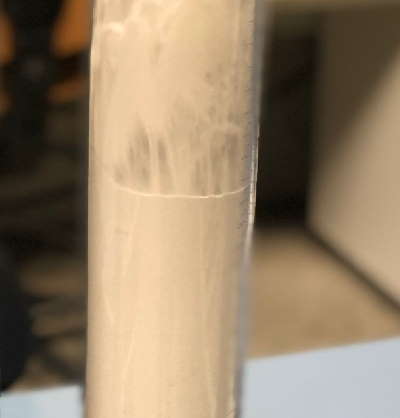Fluidization is a characteristic property that particulate solids within a fluid stream could behave as fluids. Fluidization can be considered as a special case of fluid-solids flow. The fluid flow resistance through the voids in a bed of solids is the resultant of the total drag of all the particles in the bed.
Fluidized bed is a process which can promote high level contact between gas and the powder solid. Fluidized bed is used for several purposes in powder processing, such as fluidized bed catalytic reactors, solids separation, fluidized bed combustion, fluidized coating process and fluidized bed drying. In food industry, fluidized bed is used to improve the freezing process under the quick frozen tunnel freezer. This fluidized bed tunnel is typically used on small size food products such as peas, shrimps or sliced vegetables. Nowadays, the fluidized bed drying process is wildly used in many industries. It can increase the drying efficiency by allowing for contact surface of the drying material to be suspended and therefore exposed to the air. This fluidized bed process can also be applied to cooling according to the specific applications.
When the solids particles are fluidized, the fluidized bed behaves differently as velocity, gas and solid properties are varied. We can use different fluidization set-ups capable of handling several grams of material and we can apply equipment that can handle up to approx. 1-2 kilograms of material. These set-ups can be used to assess the following variables:
Minimum fluidization velocity
The superficial gas velocity at which the bed of powder is just fluidized, is called the minimum fluidization velocity. This state of incipient fluidization can be described by determining the pressure drop in a gas flowing through a packed bed.
Minimum bubbling velocity
At a certain gas velocity, a point is eventually reached when bubbles start to form and this velocity is referred to as minimum bubbling velocity. When a bubble rises, it carries some solids inside.
De-aeration time
De-aeration occurs when fluidizing gas is suddenly stopped. The rate of bed de-aeration is often an indication of a materials Geldart particle classification. Fast de-aeration is indicative of Geldart Group B material while slow de-aeration is indicative of Geldart Group A material. The de-aeration time can also be used as a design parameter for many powder handling applications. De-aeration tests can be performed at ambient or high temperature conditions with air or inert gas as the fluidizing medium.
All these parameters describe the fluidization capability and the floodability properties of the material under investigation.
The fluidization set-up can also be used to study potential wear of the material due to attrition by means of the release of fines from the bed or assessment of the intrinsically present fines that become fully airborne during fluidization.




